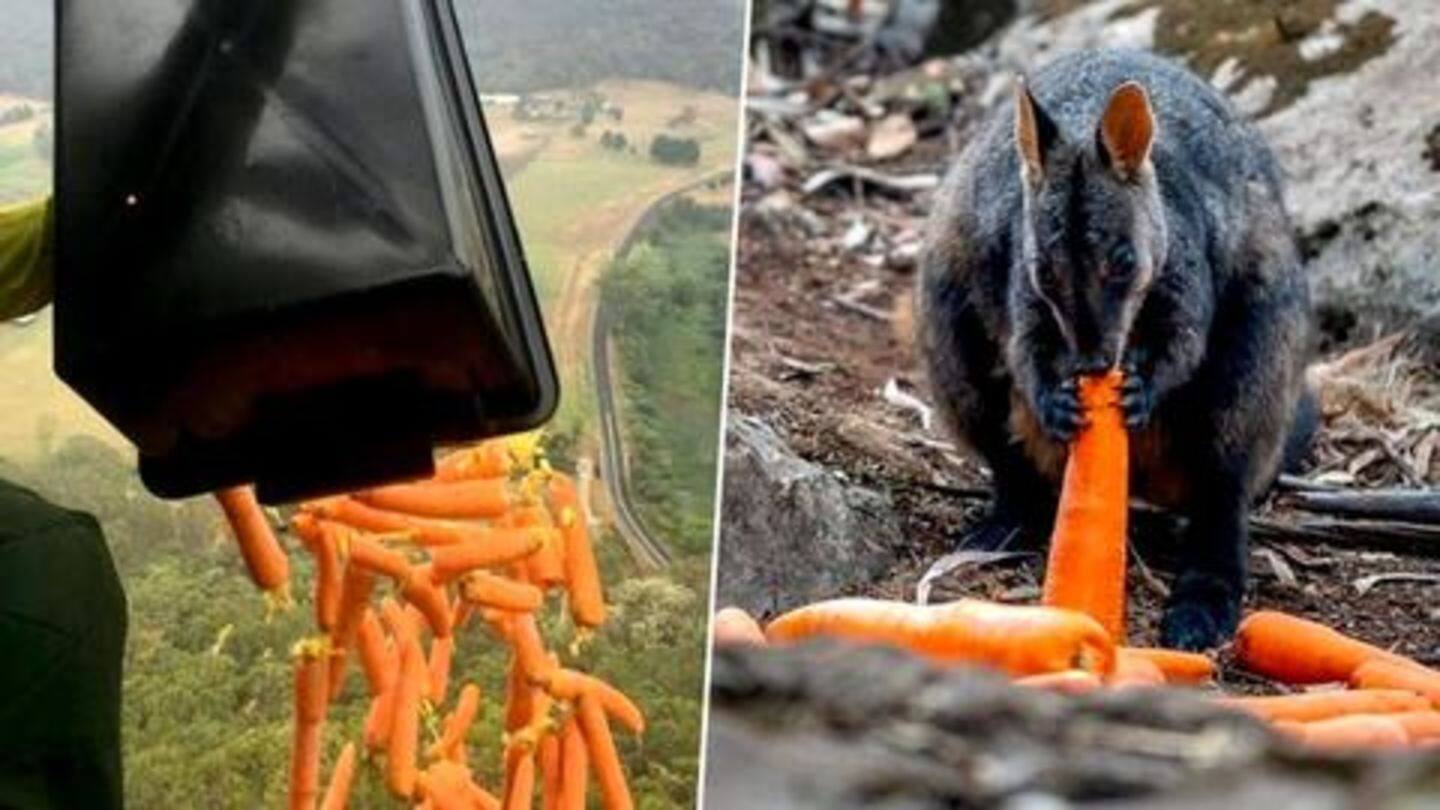
Australian government air-drops 1,000kg food to save animals amid bushfires
What's the story
As the dreadful bushfires continue to rage across Eastern Australia, the government has stepped up to save the affected wildlife. Since the bushfires started in September, a billion animals are estimated to have died, and the number is expected to rise further as the blaze has destroyed their habitat and food sources. Hence, Australia is dropping food from helicopters to feed its dying wildlife.
Details
Authorities drop 1,000 kg of food, including carrots, sweet potatoes
In the past week, the government of the state of New South Wales (NSW) has air-dropped a 1,000 kilograms of food—mainly carrots and sweet potatoes—to ensure that the brush-tailed rock-wallabies who survived the fires are fed. The mission is called 'Operation Rock Wallaby'. Notably, NSW is the worst-affected in the Australian bushfires and has recorded the highest death toll among animals and humans alike.
Twitter Post
Visuals of 'Operation Rock Wallaby'
Thousands of kilograms of carrots and sweet potato are being delivered to endangered Brush-tailed Rock-wallabies in fire affected areas as the NSW Government steps in to help. #9News pic.twitter.com/Vw3SnMUejL
— Nine News Sydney (@9NewsSyd) January 12, 2020
Quote
Most widespread food drop we've ever done: NSW Environment Minister
NSW Minister for Energy and Environment, Matt Kean, told CNN, "The provision of supplementary food is one of the key strategies we are deploying to promote the survival and recovery of endangered species like the brush-tailed rock-wallaby." Kean said, "This is the most widespread food drop we have ever done for brush-tailed rock-wallabies," adding that they are also installing cameras to monitor food uptake.
Rock wallabies
What are rock wallabies?
According to Australia's Department of Environment and Energy, brush-tailed rock-wallabies are essentially marsupials (like kangaroos, koalas, etc.) who "live on rocky escarpments, granite outcrops, and cliffs." They mainly feed on grasses, foliage, roots, bark, and fruits from shrubs and trees. The rock-wallabies are considered 'vulnerable' across Australia and 'endangered' specifically in NSW since most out of the 15 Australian species have disappeared over time.
Quote
Important brush-tailed rock-wallaby habitats burnt in bushfires: Kean
Kean explained, "Initial fire assessments indicate the habitat of several important brush-tailed rock-wallaby populations was burnt in the bushfires. The wallabies typically survive the fire itself, but are left stranded with limited natural food as the fire takes out the vegetation around their rocky habitat."
Bushfires impact
Over 1 billion animals estimated dead in bushfires
The bushfires started in September and have potentially killed 800 million animals in NSW alone, estimated University of Sydney ecologist Christopher Dickman. Across Australia, Dickman projected, the number could be well over a billion. Dickman said, "It's a monstrous event in terms of geography and the number of individual animals affected." The bushfires have also killed 27 people across Australia.